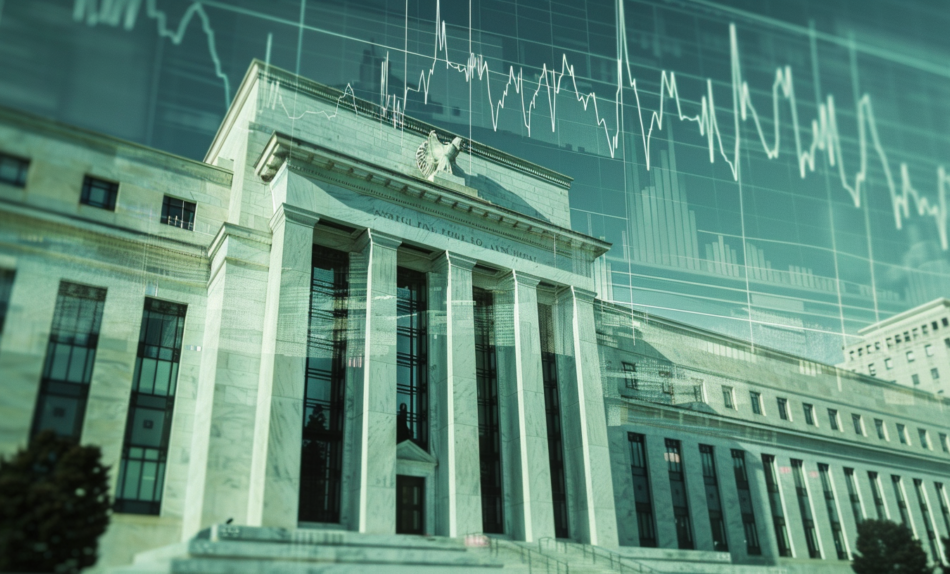November Fed Rate Cut In Jeopardy: 12 Reasons Veteran Trader Expects A Hold As Strong Data, Rising Oil Prices Shuffle The Deck
Stronger-than-expected U.S. economic data and surging oil prices are reshaping market expectations for the Federal Reserve’s November meeting.
Traders, who initially expected an aggressive 50-basis-point rate cut, are now opting on a smaller 25-basis-point move, with odds of a potential pause in the Fed’s easing cycle surging sharply in recent hours.
Following the 50-basis-point rate cut in September, a hold could be seen as an admission that the Fed may have been significantly wrong about the weakness in the U.S. labor market.
The U.S. economy continues to defy predictions of a slowdown.
In September, the U.S. economy added a staggering 254,000 nonfarm payrolls, far exceeding forecasts of 140,000 and the 12-month average of 200,000. The unemployment rate fell unexpectedly to 4.1%, and wage growth accelerated, beating economists’ expectations across the board. These factors are making it harder for the Fed to justify additional aggressive cuts in the short term.
Adding fuel to the fire, geopolitical tensions in the Middle East have escalated dramatically.
The ongoing conflict between Israel and Hezbollah, fueled by Iran’s missile attacks and the threat of Israeli retaliation, has sent oil prices skyrocketing by over 11% in just five days, with West Texas Intermediate crude breaking through $77 per barrel.
This surge in energy prices has pushed inflationary pressures higher, pushing traders to contemplate the option of a hold in interest rates.
With the economy firing on all cylinders and inflation risks rising, traders have now priced out the probability of a 50-basis-point cut in December, and attention has shifted to whether the Fed will hold rates steady in November.
Market-implied probabilities of a hold have jumped to 14%, up from just 2% on Friday and 0% the previous week, according to the CME FedWatch tool.
| Oct. 7, 2024 | 1 Day Ago (Oct 4, 2024) |
1 Week ago (Sept. 30 2024) |
|
| 50-basis-point cut | 0% | 0% | 34.7% |
| 25-basis-point cut | 86% | 97.4% | 65.3% |
| No rate cut | 14% | 2.6% | 0% |
This shift in expectations pushed 10-year bond yields back above the 4% mark — hardly what investors usually see in a rate-cut environment. On Monday, the U.S. Treasury 10-Year Note ETF UTEN dropped 0.4%, marking its fourth consecutive negative session.
Bank of America economist Aditya Bhave said, “The data flow since the Fed’s 50bp September cut has been remarkably strong. Another 50bp cut isn’t warranted.” He added that the bank now expects the Fed to adopt a more gradual approach, cutting rates by 25 basis points per meeting until March 2025.
“Right now, a series of more modest 25 basis point cuts would serve to help normalize conditions based on the latest data without getting too aggressive. I’m still concerned that falling rates while the economy is still in good shape runs the risk of another round of inflation,” said analyst Michael Gayed, CFA.
Veteran Wall Street investor Ed Yardeni outlined in a post on Monday 12 reasons why the Fed should pause rate cuts in November:
- The U.S. economy didn’t need September’s 50bps cut, as proven by the latest employment and PMI data.
- Fed officials may regret cutting by 50bps in September and should now hold steady to evaluate further data.
- Rising bond yields since the September cut suggest the easing wasn’t necessary and could fuel stronger growth.
- Further cuts could trigger a stock market “meltup,” as valuations are already nearing 1990s levels.
- Geopolitical risks in the Middle East have pushed oil prices higher, raising stagflation concerns reminiscent of the 1970s.
- Hurricane Helene’s aftermath could stimulate inflationary pressures due to rebuilding efforts.
- The recent dockworkers’ pay settlement may increase import costs and fuel wage inflation.
- Both U.S. presidential candidates propose fiscal programs that could widen the federal deficit and be inflationary.
- China’s economic stimulus is driving up global commodity prices, adding to inflationary risks.
- Further rate cuts could weaken the dollar, potentially exacerbating inflation.
- Core inflation remains above the Fed’s 2% target, with “supercore” inflation stuck above 3%.
- The real neutral Fed Funds rate could be higher than the Fed estimates, suggesting a nominal neutral rate closer to 4.0%.
Read Now:
The image was created using artificial intelligence.
Market News and Data brought to you by Benzinga APIs
© 2024 Benzinga.com. Benzinga does not provide investment advice. All rights reserved.


Leave a Reply